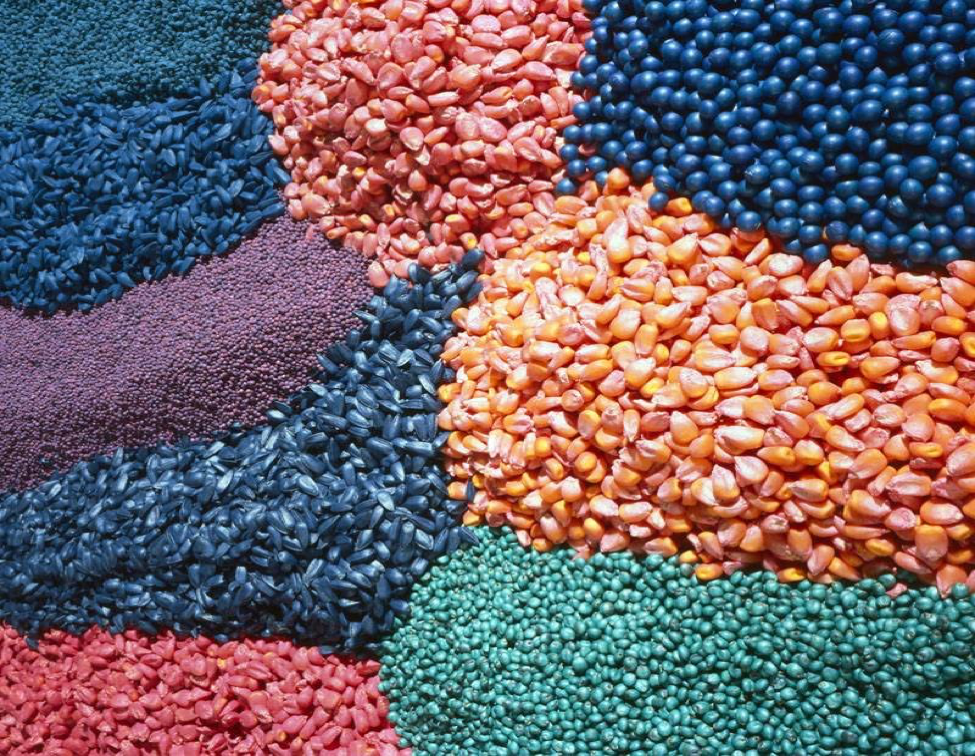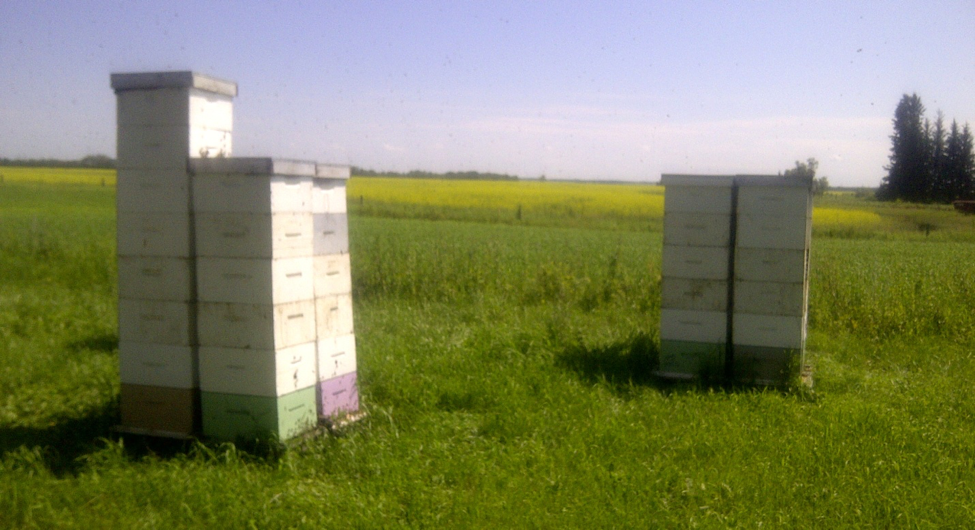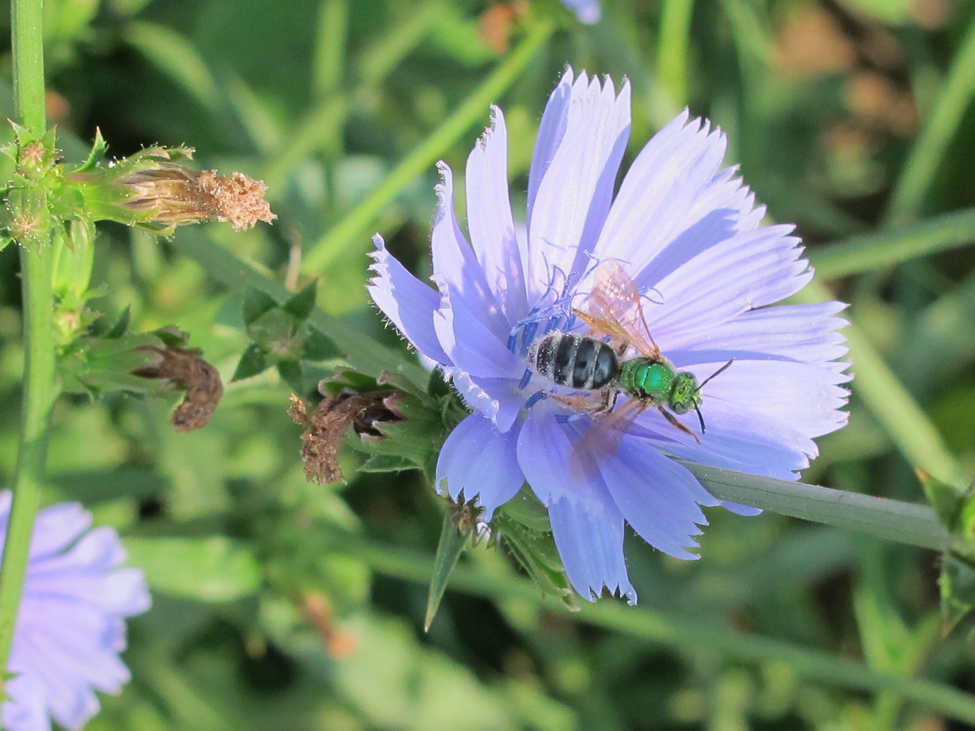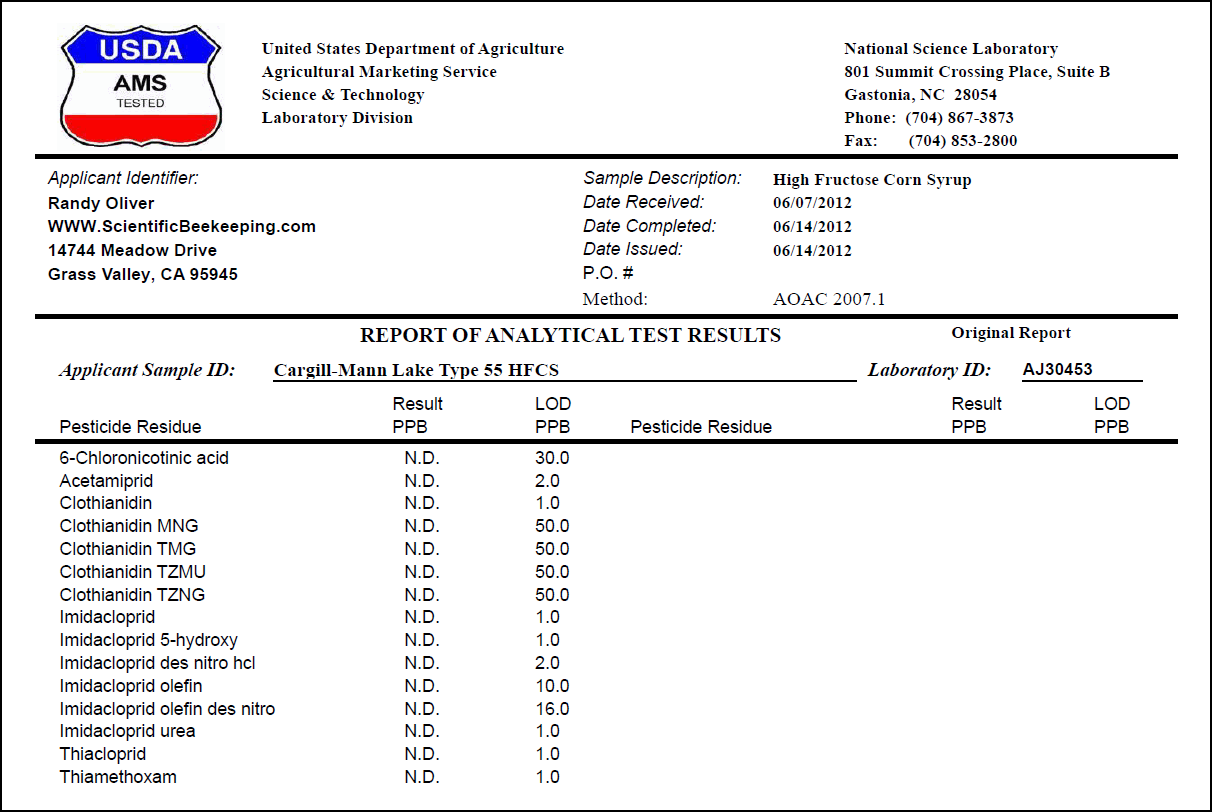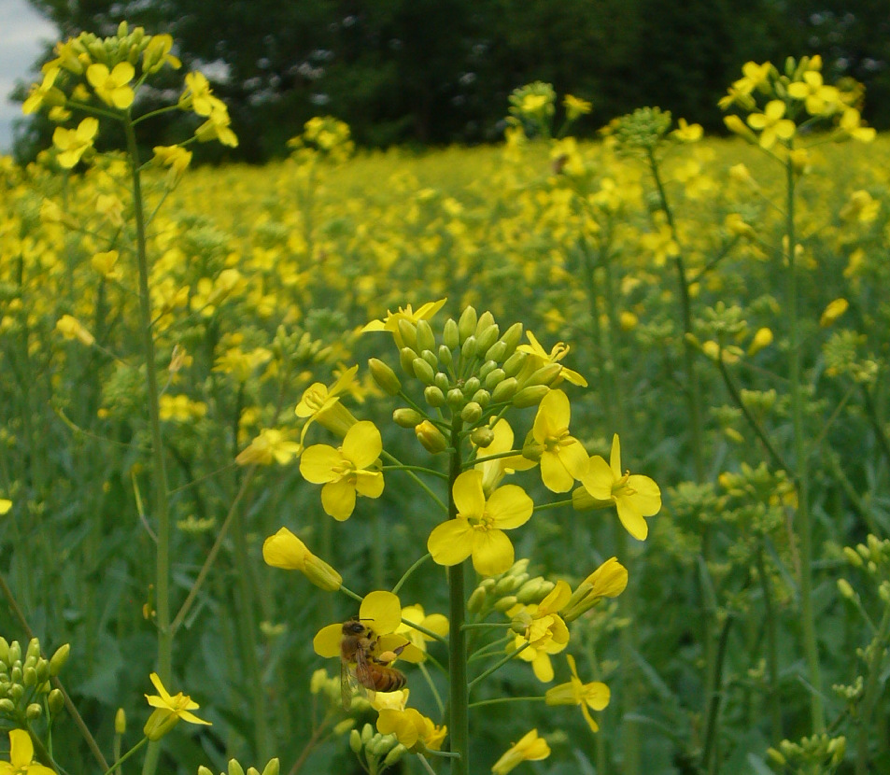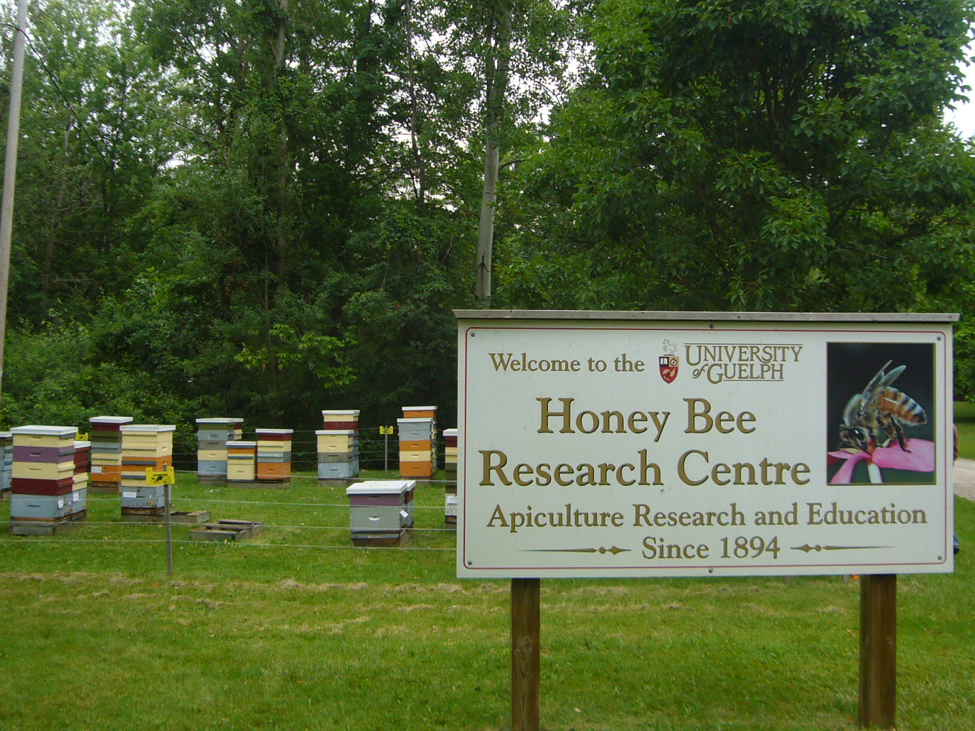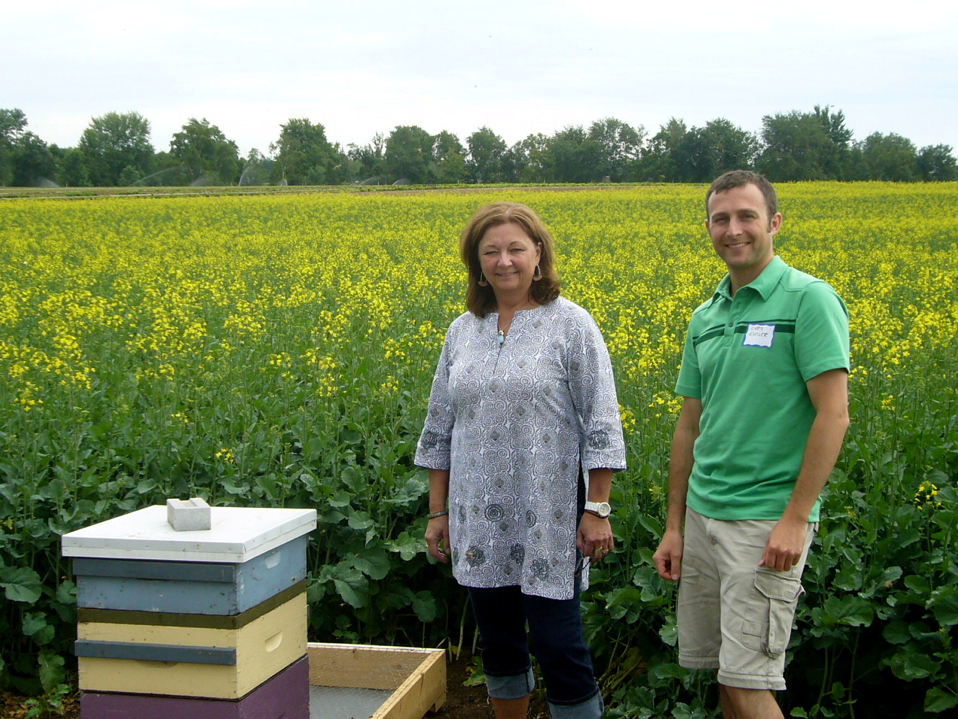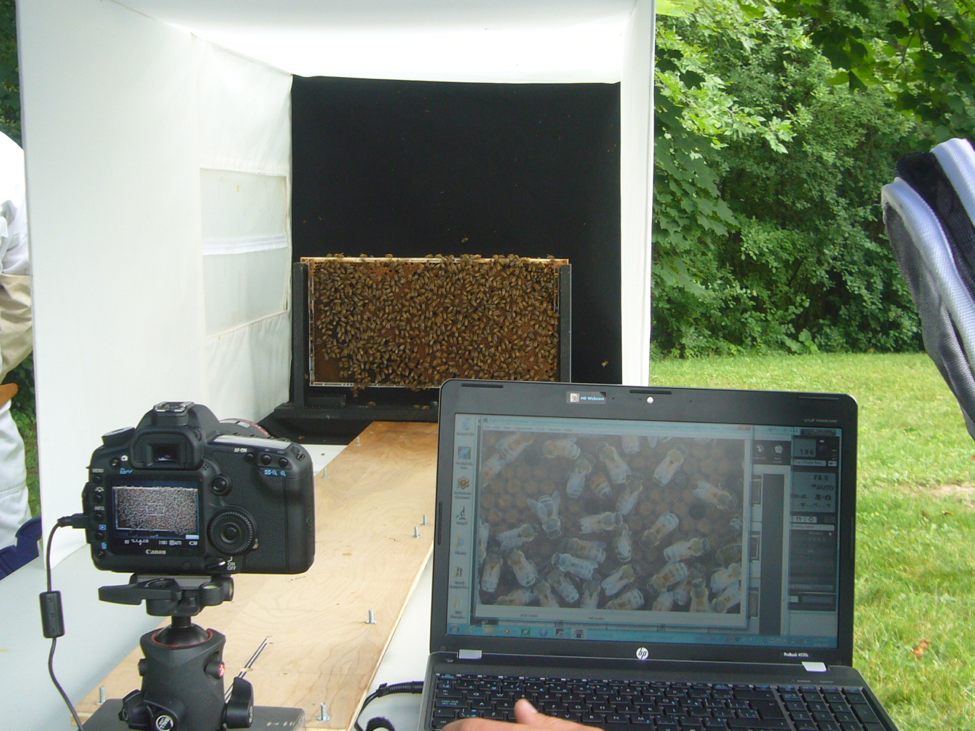Neonicotinoids: Trying To Make Sense of the Science – Part 2
Neonicotinoids: Trying to Make Sense of the Science
Part 2
Randy Oliver
ScientificBeekeeping.com
First published in ABJ September 2012
“Scientists have largely remained silent when the public discussion turns to the trade-off of benefits and risks from chemicals. They are often unwilling to engage controversial issues that could endanger their funding and research…The public interprets the unwillingness of scientists to engage those who campaign against chemicals as an implicit validation of their dangers. Those who do speak out are often…branded as industry apologists. Maybe the best we can hope for is that brave scientists, scientifically literate journalists and government officials who are responsible for translating science into regulatory policy will take the public’s best interest into account…[and] resist the irrational and often regressive impulse stirred by the scare tactics that are so common today.” 1
Thanks for the Feedback!
Following the publication of my article “The Extinction of the Honey Bee?” 2 in which I pointed out that honey bees were thriving at Ground Zero of neonicotinoid use, I fully expected to be excoriated by the anti-neonicotinoid True Believers. But to my great surprise, I was instead deluged by letters of support from beekeepers and researchers worldwide! A few examples:
- “I’m an amateur beekeeper in France and I want to tell you that I strongly believe that CCD is not caused by pesticides. Like you, I’d like to find the culprit but so far it remains a mystery.”
- “I liked your article because here in Germany we are facing a hard discussion with bee keepers and other organizations regarding neonicotinoids and feel similar as you that often any scientific idea is missing and that it is a political mission,” from a researcher at the major agricultural science institute.
- “Likewise in USA, in Europe the discussion is more and more polarized, and in the hands of activists rather than scientists,” a bee researcher from the Netherlands.
- Thanks, Randy, for acting as a mythbuster,” from a beekeeper from the Corn Belt.
Fortified by your vote of support, allow me to return to what I hope is an objective analysis of the neonicotinoid debate.
Innate Distrust of Chemicals
I came of age in the ‘60’s, and was profoundly influenced by Rachel Carson’s book Silent Spring, which detailed how humans were poisoning the environment with pesticides. I have always had an innate distrust of manmade chemicals. I became an environmental activist, subscribed to Mother Earth News and Organic Gardening, moved to the woods, and began a lifelong quest to “walk the walk”—going solar, avoiding pesticides and manmade toxins in my personal environment, creating an organic garden and orchard. I’m a lifelong member of the Sierra Club and The Nature Conservancy, and am considered in my community to be about as green as you can get.
When I first heard reports from France that some new insecticides—the neonicotinoids—were causing massive bee mortality, I of course assumed, “Here we go again—the corporate recklessness of the chemical industry, coupled with government regulators asleep at the switch, has created yet another environmental catastrophe.” 3 So, having a background in biology and chemistry, in my usual manner I began to investigate the subject deeply.
Boy, was I in for an education! I read the literature from both sides of the pesticide debate, and got to know the principal players—the beekeeper anti-neonic advocates (who I fully respect), bee researchers, ecotoxicologists, farmers, and scientists from the chemical companies and the EPA. I soon found out who I could trust for accurate information, and who was so biased that I had to take anything they said with a grain of salt. I had thought that I knew something about pesticides; but in reality, how little I knew!
Why Neonicotinoids?
“Until the mid-20th century, pest insect control in agriculture relied on largely inorganic and botanical insecticides, which were inadequate. Then, the remarkable insecticidal properties of several organochlorines, organophosphates, methylcarbamates, and pyrethroids were discovered, leading to an arsenal of synthetic organics. The effectiveness of these insecticides, however, diminished over time due to the emergence of resistant insect strains with less sensitive molecular targets in their nervous systems. This created a critical need for a new type of neuroactive insecticide with a different yet highly sensitive target. Nicotine in tobacco extract was for centuries the best available agent to prevent sucking insects from damaging crops, although this alkaloid was hazardous to people and not very effective. The search for unusual structures and optimization revealed a new class of potent insecticides, known as neonicotinoids, which are similar to nicotine in their structure and action.” 4
The neonicotinoids had three other distinct advantages:
- They are far more toxic to insects than to mammals, making them much safer for humans.
- They are absorbed by plants and translocated via the vascular system, giving effective control of sap sucking and boring insects which other sprayed insecticides might not contact.
- They can be applied as seed treatments (Fig. 1), thus being a solution to the longstanding problem that roughly 99% of sprayed treatments never actually hit a target pest, and thus are unnecessarily dumped into the environment. 5
Figure 1. Treated seed, dyed for identification. The purple ones on the left are canola. Seed treatment has a very long history[i], and has been popular in the U.S. for about 40 years. Treatment can consist of any number of fungicides or insecticides, often in “cocktails.” The neonicotinoids, since they are transported by the plant vascular system, lend themselves well to this application. The treatments are diluted as the plants grow—in canola, they no longer kill aphids or flea beetles by the time the plants have grown for a month, and by bloom time, are nontoxic to bees.
[i] Munkvold, G (2006) Seed Treatment http://www.extension.iastate.edu/Publications/CS16.pdf
The neonicotinoid insecticides have become widely popular with farmers, and when used as seed treatments, drenches, or attentively applied foliar sprays, appear to indeed be more environmentally friendly than the alternatives. However, the problem lies in the delicate balance between applying them in a manner that targets the pests, without harming “off target” species, such as bees and native pollinators. So let’s look at some of the questioned adverse effects.
Sublethal Effects
I can’t think of any researcher who has more thoroughly investigated the effects of the neonicotinoids upon honey bee behavior than Dr. Axel Decourtye in France. In an extensive and excellent recent review, 7 he summarizes research on behavior:
Learning performance: Field-relevant doses do not appear to negatively affect learning, but higher doses may. “In general, results from these studies cannot be extrapolated to natural conditions. Moreover, imidacloprid can also have facilitatory effects on learning performances that complicate the interpretation at an ecological level.” Yes, you understood him–a low dose of neonic may help bees to learn!
Orientation: “The lowest observed effect concentration on the frequentation of feeding site was 50 [ppb]” (normal field-realistic doses are usually less than 5 ppb).
Foraging: “Although these studies showed the absence of effect of neonicotinoids on foraging of treated plants, perturbations of the foraging behavior on artificial feeder were revealed in other experiments. Thus, for example, it was found a quick decrease in the foraging activity in honey bee colonies at about 20 ppb of imidacloprid. This is probably due to the anti-feedant character of the compound.” This is a key point—bees appear to avoid nectar with high concentrations of neonicotinoids. Decourtye does mention that doses at the high end of field relevance may affect bee communication within the hive.
Immune function:
Stress due to exposure to any insecticide could plausibly affect bee immune response to pathogens. I find the research along this line less than compelling. What struck me was the lack of dose response, inconsistency of effect upon nosema replication, and lack of effect in field colonies. I’m sure that we will see further research on this subject.
Some beekeepers have been confused by the action of imidacloprid against termites, thinking that it suppressed the general termite immune function. This does not appear to be the case, as explained by Ramakrishnan (1999) 8: “Collectively, this evidence indicates that imidacloprid did not disrupt termite cellular defense mechanisms, and further suggests that social behaviors are the primary defense against pathogen infection.” The social behavior he refers to is grooming, by which termites clean fungal spores off their bodies to prevent infection. Since grooming does not appear to be critical for bee defense against the most common pathogens, I find it difficult to extrapolate the action of imidacloprid against termites to bees.
Social interactions and task allocation:
It is plausible that intoxication by neonics could affect bee social behavior or alter the normal progression of age-related tasks (as proposed by Dr. James Frazier). However, if this were the case, it should affect overall colony performance, which hasn’t been observed.
Putting sublethal effects into perspective:
People get hung up on the word “toxin.” Perhaps it would help to consider the neonics as “stimulants.” As I type these words, I’m enjoying the effects of a sublethal dose of the toxic alkaloid caffeine (plants produce caffeine to poison herbivores). Two cups of coffee supplies about 1/40th of the human LD50 (median lethal dose). 9 The way I brew my java, I’m at the high end of a sublethal dose! And I’ll dose myself again late this afternoon.
So why don’t I die from caffeine toxicity? Because my body quickly degrades the toxin. The same thing happens with nicotine, and with the neonicotinoids in bees. Suchail 10, 11 found that ingested imidacloprid is rapidly passed to the bee’s rectum and excreted or degraded within hours. Very little makes it into the blood or rest of the body. Only about 5% is absorbed into the brain or flight muscles, where it is converted to the more toxic olefin metabolite, which then disappears within a day. Although the metabolite is more toxic on a dosage basis, understand that little of it actually formed.
This is the main problem with the hypothesis of Dr. Henk Tennekes 12, whose widely-cited publications attempt to make a case for the application the Druckrey–Küpfmüller equation for chronic toxicity to the neonics. I’ve corresponded at length with Dr. Tennekes, and asked him to explain why the neonics, which are also rapidly degraded by the bee, would have any more chronic toxicity than nicotine would to a human smoker. There is enough nicotine in a pack of cigarettes to easily kill a human, yet no one dies from nicotine toxicity (I watched in perverse horror as my high school biology teacher injected a rat with nicotine—its death was not a pretty sight). The point is, that nicotine and neonics appear to be so rapidly metabolized, that there is no buildup in the body (as there is in the case of DDT), the binding to the nerve receptors is reversible and insects recover fully, 13 and there is generally no increased mortality due to low-level chronic exposure.
Indeed, a number of studies have found that exposure to low doses of imidacloprid resulted in foragers being more active and carrying more pollen! 14 Some plants secrete nicotine or caffeine in their nectar; recent research 15 suggests that bees prefer a bit of stimulant “buzz” and are able to accurately self dose—avoiding syrup spiked to toxic levels.
Bottom line: Any number of scientists have diligently tried to find any sorts of sublethal effects of neonics on bees, but have failed to demonstrate adverse effects at the colony level at doses produced by seed treatments.
Effect Upon Brood
The surprising thing here is that bee larvae appear to be essentially immune to the effects of neonics! In fact no one’s been able to come up with LD50’s because you simply can’t dissolve enough of the insecticide in syrup to cause 50% of the larvae to die! 16, 17
However, there could be indirect effects, should the nurse bees—the main consumers of pollen in the hive—be affected by neonics residues. It is plausible that the nurses may exhibit reduced brood feeding. Hatjina 18 found in a lab study that nurse bees fed field-realistic doses of imidacloprid had reduced hypopharyngeal glands (that produce jelly).
On the other hand, perhaps nurses amped up on stimulants work harder—Lu 19 found that field-realistic doses of imidacloprid actually increased broodrearing, and that even extremely high doses had no significant effect upon brood area.
Bottom line: if there were an effect on brood, we would expect to see it in field studies. Such studies do not show negative effects at realistic doses.
Vine Crops—squashes and melons
Colonies fare poorly on vine crops (cucurbits) unless they have alternate forage (pers obs). Exposure to pesticides likely exacerbates this problem. Two recent studies found that foliar, soil, or irrigation-applied imidacloprid may result in residues in squash or pumpkin nectar and pollen to levels at which some behavioral effects on bees may occur.
Dively 20 found that seed treatment of pumpkins was safe for bees, but that if neonics are applied close to bloom (as by chemigation or foliar application) that they may contaminate the pollen to the extent that one might expect some effects on the “pollen hogs” in the colony, that is, newly emerged workers and drones, or nurse bees.
Stoner 21 found that at allowed label rates for squash, neonic residues in nectar or pollen could push into the low range of observable behavioral effects. Such effects would likely only be serious to honey bees should lack of alternative forage be available. However, this would be different for the specialized native squash bees: “squash bees are specialists on Cucurbita, feeding their larvae exclusively on Cucurbita pollen, and also build their nests in soil, often directly beneath squash and pumpkin vines, so they could have much more exposure to the soil-applied insecticides used on these crops.” 22
Sunflowers
Beekeepers in France emphatically blamed Gaucho seed treatment of sunflowers for colony losses. Bonmatin 23 (clearly on a mission against imidacloprid) found that sunflowers could recover imidacloprid from the soil following crops treated the previous year, and that the plants concentrated the residues in the flower head tissue (although he did not analyze nectar). Even so, he did not find residues that should have caused intoxication, even with seed treated at a much higher rate than on the U.S. label.
In Argentina, Stadler 24 placed hives in the center of large fields of flowering sunflowers from seed treated again at a higher rate than the U.S. label, and confirmed that at least 20% of the pollen in the combs was sunflower, and that the colonies had stored sunflower honey. They could not detect residues of imidacloprid in the pollen, and found that the colonies in the treated field actually performed better than in the untreated! They then moved the hives to natural pasture, and checked them again after 7 months, and found no differences between the groups.
So I don’t understand the videos I’ve seen of trembling or lethargic bees on sunflower blossoms in France. If any U.S. beekeepers have had trouble with bees on seed-treated sunflowers, I’d like to hear!
Buildup in Soil
In some clay soils residues of the neonicotinoids bond tightly to soil particles and may degrade slowly. However, the question is whether the roots of subsequently planted crops are able to absorb them (a Bayer rep pointed out to me that if they did, the farmer wouldn’t need to pay for seed treatment the next year). Data from canola fields in Canada (Fig. 2), in which treated seed has been planted year after year, do not support that residues escalate in the bloom, and a study is currently being run in California.
Figure 2. Some of Canadian beekeeper Cory Bacon’s hives working canola this July. Lab studies aside, Canadian bees appear to do quite well on seed-treated canola year after year, and I don’t hear the beekeepers complaining.
Native Pollinators
There are many other insects that feed on nectar and pollen. Native bees (Fig. 3) would be especially susceptible to systemic insecticides, since they do not fly far to forage, their larvae consume pollen directly, and due to their solitary nature, if the behavior of any female bee is disrupted, she may be unable to leave offspring. However, should native bee larvae have as high a tolerance of neonicotinoids as do honey bee larvae, the concern for larvae may be unfounded.
Figure 3. A sweat bee, Agapostemon virescens, on chicory flowering alongside an Indiana corn field. It is likely that solitary bees, such as this species, would be more negatively affected by neonicotinoids than would a honey bee colony. Photo by Larry Garrett, ID thanks to Dr. Robbin Thorpe.
Solitary native bees are an excellent bioindicator of whether systemic insecticides are causing problems, since they do not have a “reserve” as does a honey bee colony. As far as I can tell from the research, the decline in native bee populations appears to be mostly from habitat loss due to wall-to-wall tillage, not to mention spraying with old-school pesticides. There is scant evidence that field-relevant doses of neonics harm native pollinators, but this is an area that cries for additional research. Two good species to investigate would be our native squash and sunflower bees, since both forage predominately on the nectar and pollen of those plants, and since neonicotinoids are applied to both those crops.
Other Species of Life
There is legitimate concern about the effects of seed treatments upon earthworms. Dittbrenner 25 found that some species moved less soil in response to imidacloprid. Other researchers 26 have found that some predatory species of insects or spiders may be negatively affected in treated fields, likely due to the suppression of aphid populations–seed treatment only suppresses aphids while plants are young. As plants grow, the insecticide becomes too diluted to affect either sap-sucking insects or (ideally) pollen- or nectar-feeding insects.
The seed treatments appear to be more environmentally friendly to birds (who learn to avoid the seeds) and mammals than the insecticides that they replace
Water Pollution
I’ve got a background in aquatic biology, and I agree with Dr. Henk Tennekes that levels of imidacloprid in surface waters in areas of heavy applications on non food crops (such as in the Netherlands) are of concern for aquatic ecosystems. Jody Johnson 27 found 7-30 ppb in some urban/suburban water, and up to 130 ppb in nursery puddles, and low levels in some streams. Neonics are relatively nontoxic to fish, but could affect the populations of the invertebrates upon which they feed.
Landscape/Ornamental Uses
Dr. Vera Krischik 28 has pointed out the potential dangers of landscape or ornamental uses of imidacloprid due to the possibility of extremely high doses making it into the nectar. Residues that would not be allowed in field crops are possible with landscape and nursery applications, and there are reports of bees dying from nectar from treated nursery plants. I concur with Dr. Krishik’s concerns.
Tree Injections
In order to kill certain tree pests (lerp psyllids on eucalypts, borers in elm or ash) imidacloprid is registered for root or tree treatment. There is reason for concern about some of these registrations, as there is unpublished data of scary high concentrations in nectar.
Foliar Applications
Clearly the best uses for neonicotinoids are for seed application or soil drench. Foliar applications open a new can of worms, due to irregularity of application, translocation to bloom or extrafloral nectaries, or to adjacent flowering weeds. Foliar applications of neonicotinoids can clearly cause bee kills, and are much more subject to vagaries in application timing and other details than are seed treatments.
The registered uses as foliar applications should be safe for bees if label directions are followed exactly, but I simply haven’t seen enough data to make an assessment. Beekeepers should file incident reports if there are problems.
Simple Overuse
Dr. Jim Frazier points out that the unrotated use of the same seed treatments is contrary to good pesticide resistance management. Already we are seeing calls to expand the refuge plantings of non Bt corn; 29 it would likely be wise to do the same with neonic treatments. My concern is that if the pests develop resistance, then farmers will have to use additional sprays.
The Absence of any “Smoking Gun”
If neonics were actually causing colony mortality, it should be child’s play to demonstrate—just feed a colony syrup or pollen spiked with the insecticide and see how long it takes to kill it. The fact is, that try as they might, no research team has ever been able to induce colony mortality by exposing the bees to field-relevant doses of any neonicotinoid (although one can get a significant kill from corn planting dust). Nor has any investigation ever been able to link neonic residues in the hive to colony mortality. Every claim that neonics are causing serious bee mortality is unsupported supposition, not backed by any concrete evidence.
The Ignoring of Negative Findings
What is interesting about the neonics and honey bees is that the adverse effects that one may see when testing individual bees in the lab don’t necessarily translate into effects at the colony level in the field. I’ve spoken with several researchers who have tried to demonstrate harm to colonies by feeding them large amounts of imidacloprid, and found that it is hard to see any effect. 30
Such “negative findings” are rarely published—after all, who, other than the registrant or the EPA, would be interested in studies in which investigators expose bees to the chemical, and find that nothing happens? So the majority of such findings would only be published by the registrant, and of course no one trusts their research (damned if they do, damned if they don’t)!
Reviews of the Evidence
There has been a mountain of research done on the neonics, but most folk don’t have time to review it all (even if they could get their hands on the papers), so they must depend upon a trusted other to do so. Please don’t take my word for it–here are some (mostly) recent reviews; most are free downloads:
Reviews with a pro neonic bias:
I find that documents coming from the chemical industry typically have a reassuring slant, but invariably get their facts straight (it would be foolish for them to get caught in a lie).
Maus, C, G Cure, R Schmuck (2003) Safety of imidacloprid seed dressings to honey bees: a comprehensive overview and compilation of the current state of knowledge. Written by Bayer scientists, but the facts are sound. http://www.bulletinofinsectology.org/pdfarticles/vol56-2003-051-057maus.pdf
Reviews with an anti neonic bias:
Anti-neonic reviewers tend to cherry pick out several questionable studies, embellish the implications, and ignore on-the-ground beekeeper experience.
Small Blue Marble. Free downloads of a number of neonic papers. http://smallbluemarble.org.uk/research/
Pilatic, H (2012) Pesticides and Honey Bees: State of the Science. Decent summaries of many studies. http://www.panna.org/sites/default/files/Bees&Pesticides_SOS_FINAL_May2012.pdf
Relatively objective reviews:
- Xerces Society (who advocate on behalf of native pollinators)–Are Neonicotinoids Killing Bees? http://www.xerces.org/neonicotinoids-and-bees/]—did not find any strong evidence that neonics are harming pollinators, but recommend caution with use and further study.
- AFSSA (2010) Weakening, collapse and mortality of bee colonies The French Food Safety Agency conducted a thorough review of all suspected causes of colony mortality in Europe. They arrived at the politically unpopular finding that “The investigations and field work conducted to date do not lead to any conclusion that pesticides are a major cause of die-off of bee colonies in France.” http://www.uoguelph.ca/canpolin/Publications/AFSSA%20Report%20SANT-Ra-MortaliteAbeillesEN.pdf
- The European Food Safety Authority in their Statement on the findings in recent studies investigating sub-lethal effects in bees of some neonicotinoids in consideration of the uses currently authorised in Europe http://www.efsa.europa.eu/fr/efsajournal/pub/2752.htm, concluded that “Further data would be necessary before drawing a definite conclusion on the behavioural effects regarding sub-lethal exposure of foragers exposed to actual doses of neonicotinoids.”
- Blacquière, et al (2012) Neonicotinoids in bees: a review on concentrations, side-effects and risk assessment http://www.gesundebiene.at/wp-content/uploads/2012/02/Neonicotinoide-in-bees.pdf This is a very thorough review of 15 year’s worth of research (over 100 studies).
- Cresswell (2011) A meta-analysis of experiments testing the effects of a neonicotinoid insecticide (imidacloprid) on honey bees. http://www.springerlink.com/content/j7v320r55510tr54/fulltext.pdf in reviewing 14 studies, estimated that “dietary imidacloprid at field-realistic levels in nectar will have no lethal effects, but will reduce expected performance in honey bees by between 6 and 20%.”
- Creswell, Desneux, and vanEngelsdorp (2012) Dietary traces of neonicotinoid pesticides as a cause of population declines in honey bees: an evaluation by Hill’s epidemiological criteria. (Note the coauthor Dennis vanEngelsdprp, who has studied CCD as closely as anyone) “We conclude that dietary neonicotinoids cannot be implicated in honey bee declines, but this position is provisional because important gaps remain in current knowledge. We therefore identify avenues for further investigations to resolve this longstanding uncertainty.”
Of course, all researchers cover their butts and qualify their statements by suggesting that additional research needs to be done. These insecticides have been on the market for about a decade, and we are still learning about them. We definitely want to learn more about their effects upon other non target species, interactions with parasites, synergies with other pesticides, and sublethal behavioral effects.
I would prefer that you read the studies yourself, and then form your own opinions, but in reality I don’t expect you to read the hundreds of studies that I’ve read. It’s likely that most of you won’t even bother to read the reviews above!
Summary: The consensus opinion of the comprehensive reviews above, as well as of the vast majority of bee researchers that I’ve spoken with, mirrors Blacquière’s conclusion: “Many lethal and sublethal effects of neonicotinoid insecticides on bees have been described in laboratory studies, however, no effects were observed in field studies with field-realistic dosages.”
The Elephant in the Living Room
Let’s just put all scientific speculation aside, and look at the obvious—the survival and productivity of colonies actually exposed to neonics-treated crops. Not only is there no compelling evidence to date that exposure to seed-treated crops is causing harm to bees, but there are plenty of examples to the contrary, such as the thriving bee operations in the Corn Belt.
Neonicotinoid seed treatments actually appear to be living up to expectation as reduced-risk insecticides. When skeptical researchers have tested actual pollen and nectar from seed-treated crops, they invariably confirm that any neonicotinoid residues are indeed quite low. Bonmatin 32 sampled imidacloprid levels in corn pollen (Fig. 4) for three years running in France—they averaged 2.1 ppb. But contaminated pollen only made up about half of the pollen trapped at the entrances, so he revised his overall colony exposure via pollen to 0.6 ppb—a level at which no harmful effects have ever been observed.
Over the past two seasons Henderson and Bromenshenk (in press) sampled trapped nectar and/or pollen from hives in canola fields in Canada and corn across the Midwest; 95% contained less than 2.5 ppb of clothianidin residues.
Figure 3. A sweat bee, Agapostemon virescens, on chicory flowering alongside an Indiana corn field. It is likely that solitary bees, such as this species, would be more negatively affected by neonicotinoids than would a honey bee colony. Photo by Larry Garrett, ID thanks to Dr. Robbin Thorpe.
Colonies subsisting on corn pollen alone may indeed go downhill, but that would be due to its lack of certain amino acids. They do not appear to suffer from going into winter with a portion of their beebread consisting of pollen from seed-treated corn. No study (and there have been several) has been able to demonstrate that colonies suffer from foraging on seed-treated corn pollen, and some suggest that it was actually of benefit to them. 33
On the Canadian prairie, colonies build up and survive fine on a diet of canola nectar and pollen from treated fields. If neonicotinoid seed treatments were indeed causing the sort of colony mortality that some claim, the Midwestern and Canadian beekeepers should notice!
The Good, the Bad, and the Ugly
My personal assessment of our state of knowledge on the neonics:
The Good
- Neonics are unquestionably reduced-risk insecticides as far as humans and wildlife are concerned, and their use as seed treatments appears to be an environmentally-friendlier way to put the pesticide exactly where it is needed.
- Bees and other pollinators appear to be able to thrive on the pollen and nectar of seed-treated plants.
The Bad
- There are clearly documented sublethal behavioral effects, but they do not appear to affect bees at field-relevant doses, and appear to be greatly mitigated at the colony level.
- Misapplication by homeowners and nurseries can result in unacceptably high residues in nectar or pollen, as can chemigation (as in vine crops).
- There is the possibility of residue buildup in soil, which should be monitored.
- Landscape and ornamental use can result in runoff into aquatic ecosystems, as documented by Henk Tennkes.
I suggest that beekeepers work closely with regulators on these issues.
The Ugly
- Foliar (spray) applications are less well studied than seed treatments, and have greater potential for inadvertent impact on pollinators. Applications to flowering (or soon to be flowering) plants could cause serious bee mortality, and should be carefully regulated.
- Injections of, or root application to, nectar-producing trees. For the sake of pollinators these applications must be closely investigated and monitored.
- Planting dust from sowing of corn. Although significant planting dust kills are rare, they are ugly. This issue is a bleeding wound to the beekeeping community, and needs to be addressed by the EPA and the registrants. Beekeepers should not be forced to suffer mortality to their livestock due to unregulated pneumatic planter dust. France and Germany have models that we can follow. Beekeepers rightfully feel strongly that the registrants should step forward and compensate beekeepers for their losses until the issue is resolved.
Conclusion
There is no conclusion. Neonics have only been on the market for about a decade, and we are learning how best to use and regulate them. There is plenty of current research and monitoring being done, and the world’s main regulatory agencies are currently carefully reviewing their registrations.
Separating Fact from Fiction
Up ‘til now this article has been my best shot at an objective review of the scientific data and on-the-ground assessments of the neonicotinoid insecticides. Now I am going to shift from statement of fact to my own personal opinions.
I don’t want to hammer on the anti-neonic crowd, nor do I want to sound condescending. One can indeed make a circumstantial case against the neonics, and I feel for beekeepers who have watched their hives fall apart—especially from pesticide issues. What I found, however, is that if one really does their homework, that the case against the neonics largely falls apart.
What bothers me is when advocates embellish the facts to suit their case. I choke on the amount of mis- or disinformation in many of their publications. For example, a recent issue of Britain’s The Beekeepers Quarterly 34 informs us that:
“in California [neonics] were applied to the entire almond crop for the last decade—which is why American bees collapsed so dramatically”
How easy it would have been to solve CCD if only that statement had any veracity! In truth, neonics were not used to any extent on almonds, a fact easy to check since California pesticide use reports are freely available. I find this sort of tossing about misinformation to be unethical.
The facts are that that when I checked the use reports for 2003, 2006, 2009, and 2010, there were zero neonic applications in the first two years, and only 96 and 1070 lbs of imidacloprid applied in 2009 and 2010 respectively (58 applications in 2010, and one app. of thiamethoxam of 0.17 lbs). To put those figures into perspective, about 20 million pounds of some 350 different pesticides are applied to almonds each season, predominately fungicides, which the growers spray liberally over the bees and bloom during wet springs. Yet colonies generally come out of almonds looking great!
It’s true that Bayer withdrew the registration for imidacloprid for almonds, but rather than being an admission of a problem, 35 it simply wasn’t worth it for Bayer to perform additional supportive studies for a product that not only wasn’t being used, but had gone off patent and would have been sold by copycat manufacturers using Bayer’s data (Dr. David Fischer, pers comm).
The problem with misinformation is that well-meaning folk then hop on the bandwagon to push their legislators to do something about an imagined problem. The more that I investigate pesticide issues, the more I find that policy has been driven by the politics of misinformation and fear, rather than by objective analysis of risks vs. benefits. I quoted the introduction to this article from a very readable book (a free download which I highly recommend) called “Scared to Death.” 36 The author gives examples in which well-meaning advocacy groups have fomented enough public pressure to force the withdrawal of this or that chemical from the market, despite a lack of evidence that the chemical was in truth harmful!
Caution: If you are a lifelong environmentalist, reading a decidedly pro-chemical book such as this will take you out of your comfort zone, and may force you to reevaluate your established views. However, it is impossible to dismiss the author’s analysis, since he does a pretty good job of backing up his claims with facts!
Overstepping the Bounds
I strongly support the pesticide watchdog groups, and frequently refer to their websites for information. However, I feel that they sometimes fall into Abraham Maslow’s trap of: “If the only tool you have is a hammer, you tend to treat everything as if it were a nail.” Some of these groups would have us believe that every health problem that humans or bees have can be blamed upon pesticides, a fear that I bought into in my younger days. But reality is not that simple.
For example, in researching the DPR database, I came across the figures for total pesticide use per county in California. 37 Aha, I thought, here’s a chance to nail a correlation between pesticide exposure and cancer! So I ran down a map for incidence of cancer by county to compare. 38 To my utter surprise, Fresno and Kern, agricultural counties using 30 and 25 million pounds of pesticides, respectively, in 2010 had lower cancer rates than did the pristine Northern California coastal counties such as Humboldt and Mendocino (0.03 and 1 million pounds). That bastion of environmental activism and organic everything, Marin county (0.06 million lbs), was in the highest tier of cancer incidence! Astoundingly, all six of the Calif counties with the highest pesticide usage were in the lowest tiers of cancer rates. Go figure!
The neonicotinoids (generally lumped together with GMO’s) have currently been pumped up to be a straw man that is responsible for the demise of the honey bee, and some advocacy groups are pulling out all stops in order to take them down. A problem happens when advocacy groups shift from merely informing our regulatory agencies, to the starting of public campaigns (that ignore actual evidence) to push lawmakers to overstep the regulators and ban a certain chemical anyway. This can result in unintended consequences to both humans and bees.
I have a vested interest in pesticides that are safer for humans, and the neonics fit that bill. In the case of bees, should seed treatment with clothianidin be banned, as PANNA is pushing, it’s not like farmers are all going to suddenly go organic—they will simply substitute other insecticides, which will then pollute the environment (and likely cause bee mortality) to a much greater degree–even some “organic” pesticides are more harmful to bees or other beneficials than some synthetics. 39, 40
Not only that, but when emotion trumps science, what are farmers and the Plant Protection Product industry supposed to do? It takes millions of dollars to bring a new product to market—including the newer generation “biopesticides” and reduced-risk pesticides. Why should industry invest if their hard work all goes up in smoke as the result of an irrationally fearful public campaign?
Practical application: my concern is that the beekeeping community should be cautious about allowing itself to be used as a poster child for the “neonicotinoids are the cause of CCD and the extinction of the bee” NGO’s. Some of these same advocates could well be campaigning next year against the natural toxins, or grains of GMO pollen, that are found in some honeys!
The EPA is actually doing a decent job. I’ve read their risk assessments for the neonics. They ask the right questions, and base their decisions on scientific evidence, not anecdote and emotion. I feel that when anti-chemical advocates or beekeepers bypass the system, that our society and the environment may suffer. The current focus on the neonicotinoids has drawn attention away from the incontrovertible damage caused to colonies every year by spray applications of other pesticides, as well as from important bee research which is finally elucidating the biological causes of colony mortality worldwide. To me, this misdirection of focus is a problem.
Folks, all regulatory agencies worldwide are fully aware of the questions regarding the neonicotinoid insecticides. The EPA is stuck between a hostile congress and farm lobby on one side, and the NGO advocacy groups and beekeepers on the other, and must stick to scientific evidence. There are plenty of watchdogs making sure that EPA does its job.
Let’s Redirect Our Energy
Instead of putting unwarranted lobbying effort against the single insecticide clothianidin, the bee industry would better benefit by going after (as Darren Cox says) “the low-hanging fruit”—the all-too-common bee kills due to spray applications of other pesticides. This is a labeling, educational, and enforcement issue.
- The EPA needs to better clarify its label requirements to prevent applicators from spraying onto flowering crops or allowing pesticide drift onto impact adjacent areas.
- The EPA needs to reassess the impact of fungicides, surfactants, other adjuvants, or tank mixes upon bees.
- Growers and applicators need to be better educated as to how to protect their crops without harming pollinators. Sometimes simply changing the timing of spraying can protect bees.
- EPA needs to push state agencies to cooperate with (rather than discourage) beekeepers when they suffer damages.
- State agencies need to take the lead in actually enforcing pesticide laws when violations occur.
The EPA has brought beekeepers to the regulatory table, and we are currently being well represented by the National Honey Bee Advisory Board, and by Darren Cox at the Pesticide Program Dialogue Committee. I’m greatly encouraged that the NHBAB currently includes beekeeper/growers—who see both sides of the issue of necessary plant protection vs. “acceptable damage” to bees. The commercial beekeepers are clearly letting the EPA know of the extent of their losses due to pesticides.
I want to also be clear that we should all be appreciative of the hard work done by the NGO’s (overzealous or not) and especially by those beekeepers who, at considerable personal expense, donate their time toward the benefit of our industry by lobbying the regulators to pay attention to our very real issues.
Last minute update:
As I was getting ready to send this article off to press, the EPA denied the recent petition requesting emergency suspension of clothianidin based on imminent hazard, stating in its response:
“Based on the data, literature, and incidents cited in the petition and otherwise available to the Office of Pesticide Programs, the EPA does not find there currently is evidence adequate to demonstrate an imminent and substantial likelihood of serious harm occurring to bees and other pollinators from the use of clothianidin.” 41
You can read the technical supporting documents yourself. 42 I do not for a moment doubt the earnestness of the petitioners, but I found that the EPA interpreted the research exactly as I have, and concur that there was simply not enough evidence (to date) that clothianidin poses a major threat to bees, beekeeping, or pollinators in general.
References
1 Entine, J (2011) Scared Death: How Chemophobia Threatens Public Health. http://www.acsh.org/include/docFormat_list.asp?docRecNo=1133&docType=0
2 July ABJ
3 Credit to Entine (2010) op. cit.
4 Tomizawa, M and JE Casida (2009) Molecular recognition of neonicotinoid insecticides: the determinants of life or death. Acc. Chem. Res. 42(2): 260–269.
5 Pimentel, D. 2001. Environmental effects of pesticides on public health, birds and other organisms. Rachel Carson and the Conservation Movement: Past Present and Future. Conference presented 10–12 August 2001, Shepherdstown, W.V. http://rachels-carson-of-today.blogspot.com/2011/02/environmental-effects-of-pesticides-on.html
6 Munkvold, G (2006) Seed Treatment http://www.extension.iastate.edu/Publications/CS16.pdf
7 Decourtye and Devillers (2010) Ecotoxicity of Neonicotinoid Insecticides to Bees. In, Insect Nicotinic Acetylcholine Receptors, Advances in Experimental Medicine and Biology 683: 85-95, DOI: 10.1007/978-1-4419-6445-8_8.
8 Ramakrishnan, R (1999) Imidacloprid-enhanced Reticulitermes flavipes (Kollar) (Isoptera: Rhinotermitidae) susceptibility to the entomopathogen Metarhizium anisopliae (Metsch.) Sorokin. J. Econ. Entomol 92:1125–1132.
9 Peters, J M (1967). Factors affecting caffeine toxicity: a review of the literature. The Journal of Clinical Pharmacology and the Journal of New Drugs (7): 131–141
10 Suchail, S, et al (2004a) Metabolism of imidacloprid in Apis mellifera. Pest Manag Sci 60:291-296
11 Suchail, S, et al (2004b) In vivo distribution and metabolisation of 14C-imidacloprid in different compartments of Apis mellifera L. Pest Manag Sci 60(11):1056-62 (2004b).
12 Tennekes HA. The significance of the Druckrey-Küpfmüller equation for risk assessment–the toxicity of neonicotinoid insecticides to arthropods is reinforced by exposure time. Toxicology 276(1):1-4.
13 Dr. John Casida, pers comm
14 Faucon, J-P, et al (2005) Experimental study on the toxicity of imidacloprid given in syrup to honey bee (Apis mellifera) colonies. Pest Manag Sci 61:111–125.
15 Are bees addicted to caffeine and nicotine?.ScienceDaily. Retrieved February 8, 2011, from http://www.sciencedaily.com/releases/2010/02/100210101504.htm
16 Lodesani, M, et al (2009) Effects of coated maize seed on honey bees: Effects on the brood. http://www.cra-api.it/online/immagini/Apenet_2009_eng.pdf
17 Lodesani, Marco, pers comm
18 Hatjina, F and T Dogaroglu (2010) Imidacloprid effect on honey bees under laboratory conditions using hoarding cages. http://www.coloss.org/publications/proceedings_workshop_bologna_2010
19 Lu,C, KM Warchol, RA Callahan (2012) In situ replication of honey bee colony collapse disorder. Bulletin of Insectology 65 (1): 99-106.
20 Dively, GP, Kamel A (2012) Insecticide residues in pollen and nectar of a cucurbit crop and their potential exposure to pollinators. J Agric Food Chem. 60: 4449–4456.
21 Stoner KA and BD Eitzer (2012) movement of soil-applied imidacloprid and thiamethoxam into nectar and pollen of squash (Cucurbita pepo). PLoS ONE 7(6): e39114. doi:10.1371/journal.pone.0039114
22 ibid
23 Bonmatin, JM, et al (2005) Quantification of imidacloprid uptake in maize crops. J. Agr. Food Chem. 53: 5336-5341.
24 Stadler T, et al (2003) Long-term toxicity assessment of imidacloprid to evaluate side effects on honey bees exposed to treated sunflower in Argentina, Bull Insect 2003; 56:77-81.
25 Dittbrenner, N, et al (2011) Assessment of short and long-term effects of imidacloprid on the burrowing behaviour of two earthworm species (Aporrectodea caliginosa and Lumbricus terrestris) by using 2D and 3D post-exposure techniques. Chemosphere 84(10): 1349–1355.
26 Albajes R, López C, Pons X (2003) Predatory fauna in cornfields and response to imidacloprid seed treatment. J Econ Entomol. 96(6):1805-13.
27 Jody Johnson (2011 ABRC)
28 Krischik,VA, AI Landmark, and GE. Heimpel (2007) Soil-Applied Imidacloprid Is Translocated to Nectar and Kills Nectar-Feeding Anagyrus pseudococci (Girault) (Hymenoptera: Encyrtidae). Environ. Entomol. 36(5): 1238-1245.
29 http://www.sciencedaily.com/releases/2012/06/120605102846.htm)–it
30 Dively, GP, et al (2010) Sublethal and synergistic effects of pesticides http://agresearch.umd.edu/recs/WREC/files/2010Programs/EASSubletha%20Effects2010.pdf
31 Creswell, Desneux, and vanEngelsdorp (2012) Dietary traces of neonicotinoid pesticides as a cause of population declines in honey bees: an evaluation by Hill’s epidemiological criteria. Pest Management Science 68(6): 819–827
32 Bonmatin (2005) Op. cit.
33 Nguyen BK, et al (2009) Does imidacloprid seed-treated maize have an impact on honey bee mortality? J Econ Entomol 102:616–623.
34 The Beekeepers Quarterly June 2012 (U.K.) Neonicotinoids—Our toxic countryside http://www.boerenlandvogels.nl/sites/default/files/BKQ%20108%20-%20Neonicotinoid%20Pesticides_0.pdf
35 http://www.panna.org/sites/default/files/BayerPullImidacloprid.pdf
36 Entine, op. cit.
37 http://www.cdpr.ca.gov/docs/pur/pur10rep/comrpt10.pdf
38 http://www.chcf.org/~/media/MEDIA%20LIBRARY%20Files/PDF/C/PDF%20CancerInCalifornia12.pdf
39 Bahlai, CA, et al (2010) Choosing organic pesticides over synthetic pesticides may not effectively mitigate environmental risk in soybeans. http://www.plosone.org/article/info%3Adoi%2F10.1371%2Fjournal.pone.0011250
40 http://www.organicfarming101.com/organic-pesticides/
41 Response to petition http://www.regulations.gov/#!documentDetail;D=EPA-HQ-OPP-2012-0334-0006
42 Technical supporting documents http://www.regulations.gov/#!documentDetail;D=EPA-HQ-OPP-2012-0334-0012




